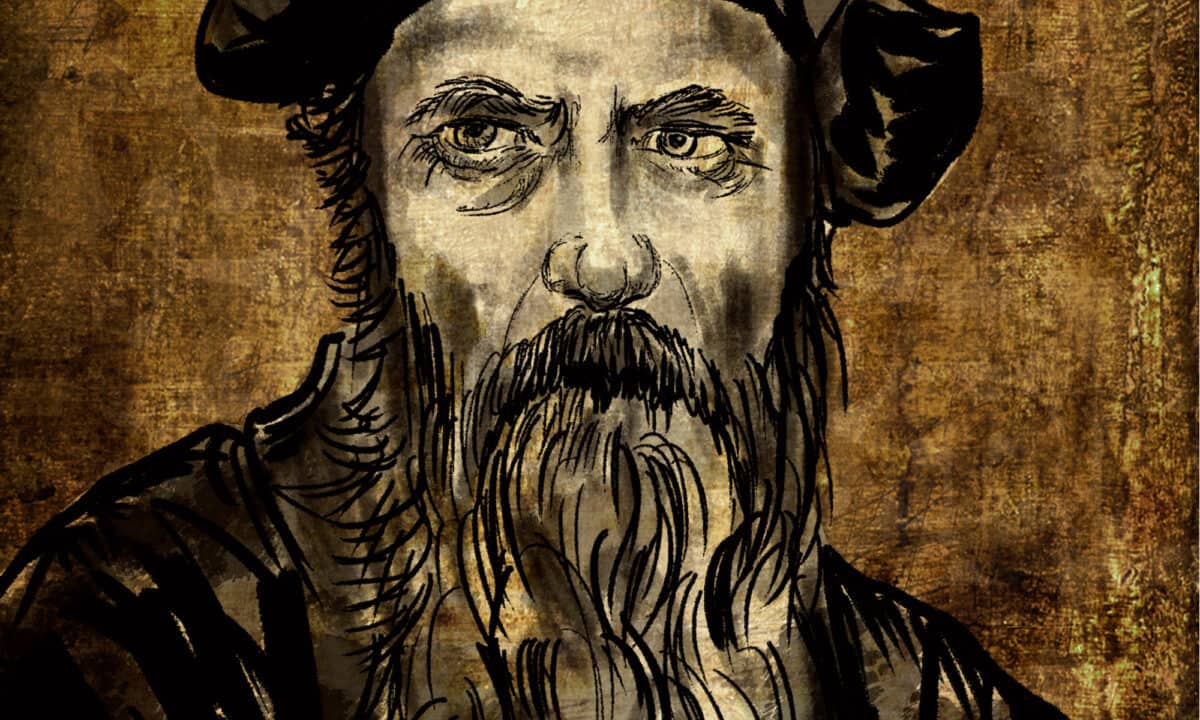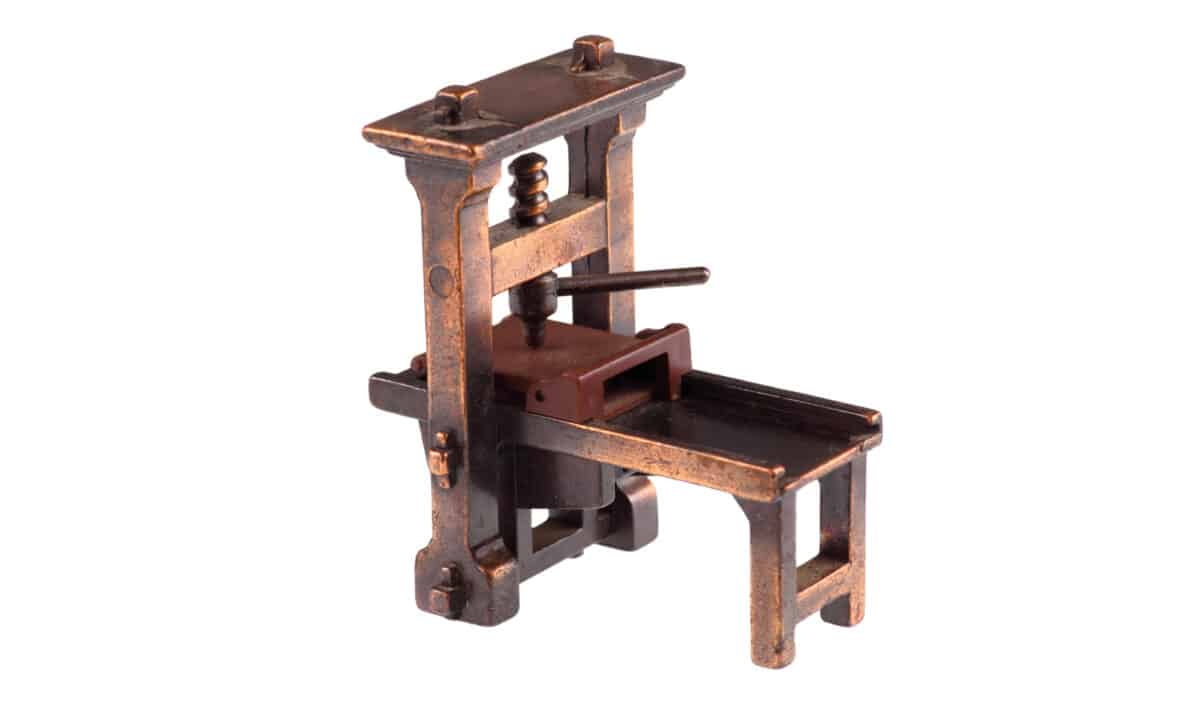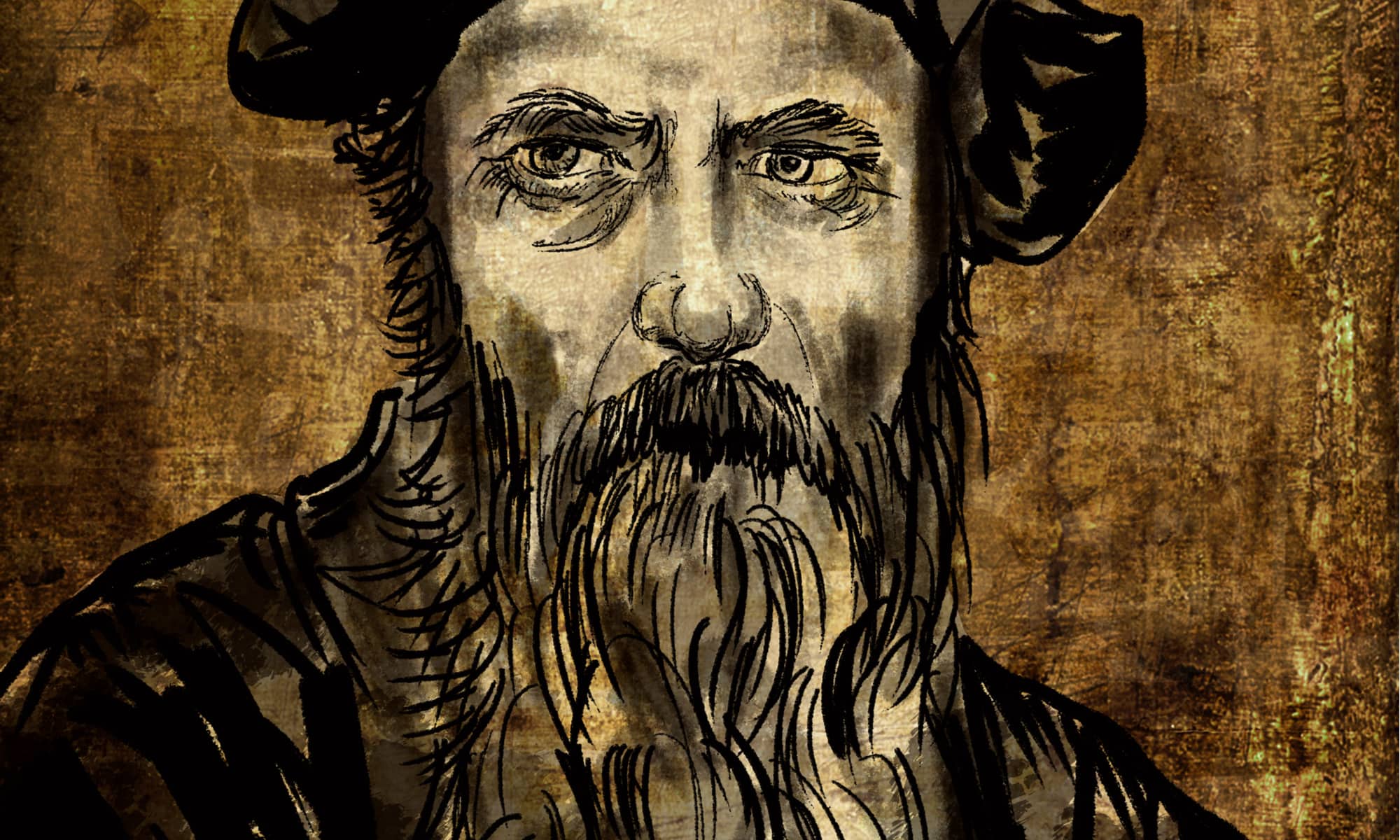Inventors are a lot like songwriters if you think about it: You have your one-hit wonders, and then you have your global superstars. The ones who score a single chart-topper, and the ones who completely redefine the sound of a generation and continue to be prominent for generations to come. When looking at it through this lens, Inventor Johannes Gutenberg undoubtedly belongs to the latter classification: an icon of his craft who totally changed the world as it was known at the time with the invention of his movable-type printing press.
It’s hard to think of another inventor with Gutenberg’s kind of influence. But who was the man, and what was his life like? Both personal and professional? Let’s break down the facts about one of the world’s most significant inventors.
Quick Facts
- Full Name
- Johannes Gensfleisch zur Laden zum Gutenberg
- Net Worth
- N/A
- Children
- N/A
- Nationality
- German
- Place of Birth
- Mainz, Germany
- Fields of Expertise
- [“Inventor”,”Printing”]
- Institutions
- N/A
- Contributions
- Movable-type printing press

Who Was Johannes Gutenberg?
We know that Johannes Gutenberg invented the movable-type printing press, effectively paving the way for every printer and publisher to follow, but do we know who Johannes Gutenberg really was before and after his invention? Let’s take a look at the facts about the inventor’s early life and his career before, during, and after the invention of the printing press.
Early Life
Johannes Gutenberg was born around the year 1400, in the Rhine-Main area of the city of Mainz, Germany. (While the exact date of his birth is not known, the year of his birth can be approximated based on his eventual death date. Historians assume it to be somewhere between 1394 and 1404, while Mainz declared his symbolic date of birth as June 24th, 1400.) He was the youngest son of an upper-class merchant named Friele Gensfleisch zur Laden and Else Wyrich, the daughter of a shopkeeper. Gutenberg was later baptized at St. Christoph’s Church in Mainz, where he and his parents lived for about the first decade of his life.
Beyond these details, much of Gutenberg’s early family life remains more or less a mystery. It can be assumed, based on cultural norms of the time, that Gutenberg would have been trained in his father’s trade during this time in his life, but there’s no real hard evidence of this.
By the time 1411 rolled around, when Gutenberg was anywhere from 11 to 17, the upper class was run out of the city of Mainz following an uprising against them. It’s believed that Gutenberg’s parents packed up their belongings and moved the family to Eltville am Rhein, Germany, where Gutenberg’s mother inherited an estate.
Career
Historians believe that Johannes Gutenberg and his parents stayed away from Mainz until at least 1430, when he would have been in his 30s. Shortly before this, he might have studied at the University of Erfurt — however, it’s not known for certain. Around 1430, it’s said that political reasons led Gutenberg to move to Strasbourg, Germany, where he worked as a goldsmith and a militiaman.
Around 1440, Gutenberg — still working as a goldsmith — debuted the mysterious research he’d been working on: a device called the printing press. Gutenberg’s research and development process were so secretive that it’s not even clear what kind of research or trial runs occurred in the lead-up to the printing press’s debut.
What Did Johannes Gutenberg Invent?
By 1450, Johannes Gutenberg’s invention — the printing press — was fully operational. He could officially leave his career as a goldsmith behind. Historians say the very first thing printed was a German poem, possibly as a proof of concept to secure further investments. It’s known that wealthy lender Johann Fust was one such person impressed by Gutenberg’s invention, and Fust’s son-in-law Peter Schöffer was another.
Gutenberg set up shop in Humbrechthof, Germany at a property that belonged to his family. Here, he embarked on the biggest printing endeavor known to man at the time: the printing of a Bible. (He was likely printing Latin texts for wealthy clients at the same time, probably to secure some additional funds. Some even believe Gutenberg had two separate printing presses — one for personal use and one for professional use.)
His printer was defined by movable type, which required him to spend up to half a day or more placing up to 100,000 individual letters, spaces, and symbols onto a metal grid, covering it in ink, pressing it down on a blank page, hanging the page to dry, and then starting over again for the next page. At the height of his printing operation, Gutenberg is said to have had up to 25 men on 25 different printing presses working on different pages at the same time. While the printing press was his primary invention, he inadvertently invented something else in the process: typography, or printed fonts.

Johannes Gutenberg: Marriage, Divorce, Children, and Personal Life
If so little is known about Johannes Gutenberg, then you can rest assured that even less is known about his personal life. However, there are some details worth mentioning below.
Marriage
In 1436 and 1437, Johannes Gutenberg’s name was tied to a court case involving a broken promise of marriage. According to the case, Gutenberg had promised to marry a woman in Strasbourg, but the marriage never actually took place and she apparently took him to court for it.
Tragedy
As is often the case with some of history’s most notable figures, Johannes Gutenberg more or less lived in poverty for much of his adult life. He had very little money, and what he did have was spent on court costs for several different court cases tied to his name. Most significant of these is the case against him in 1456, where Fust sued Gutenberg for what equates to 6% interest in the earnings from the printing press. The trial effectively bankrupted Gutenberg, and he died less than a decade after the end of the trial.
Johannes Gutenberg Published Works and Books
While Johannes Gutenberg was not a writer himself, he was most certainly a publisher. His two most influential published works are as follows.
The Gutenberg Bible
Gutenberg’s Bible — sometimes referred to as the 42-line Bible, the Mazarin Bible, or simply the B42 — was the first major book to be mass-produced in Europe. It was the beginning of the Western age of printed books, making the Gutenberg Bible one of the most valuable books known to man.
Ars Minor
Beyond serving as the publisher of the Gutenberg Bible, Johannes also printed some editions of Ars Minor — a Latin grammar schoolbook commonly used at this time in the 15th century.
Johannes Gutenberg Quotes
- “It is a press, certainly, but a press from which shall flow in inexhaustible streams. Through it, God will spread His Word. A spring of truth shall flow from it: like a new star it shall scatter the darkness of ignorance, and cause a light heretofore unknown to shine amongst men.”
- “Give me twenty-six soldiers of lead and I will conquer the world.”
- “Religious truth is captive in a small number of little manuscripts which guard the common treasures, instead of expanding them. Let us break the seal which binds these holy things; let us give wings to the truth that it may fly with the Word, no longer prepared at vast expense, but multitudes everlastingly by a machine which never wearies to every soul which enters life.”
Up Next…
- Explore Leonardo da Vinci’s Biography, History and Inventions: Is Leonardo da Vinci the greatest inventor of all time? Decide for yourself!
- The History of Leonardo da Vinci’s Automata: Automata are considered by many to be the first robots. Read about the automat of da Vinci.
- Meet Pierre Jaquet-Droz – Complete Biography: Some time after da Vinci, a watchmaker named Jaquet-Droz created the first programable automaton. See for yourself the beautiful and amazing trio of automata created by this artist in the 1700s!
Want to Retire Early? Start Here (Sponsor)
Want retirement to come a few years earlier than you’d planned? Or are you ready to retire now, but want an extra set of eyes on your finances?
Now you can speak with up to 3 financial experts in your area for FREE. By simply clicking here you can begin to match with financial professionals who can help you build your plan to retire early. And the best part? The first conversation with them is free.
Click here to match with up to 3 financial pros who would be excited to help you make financial decisions.
